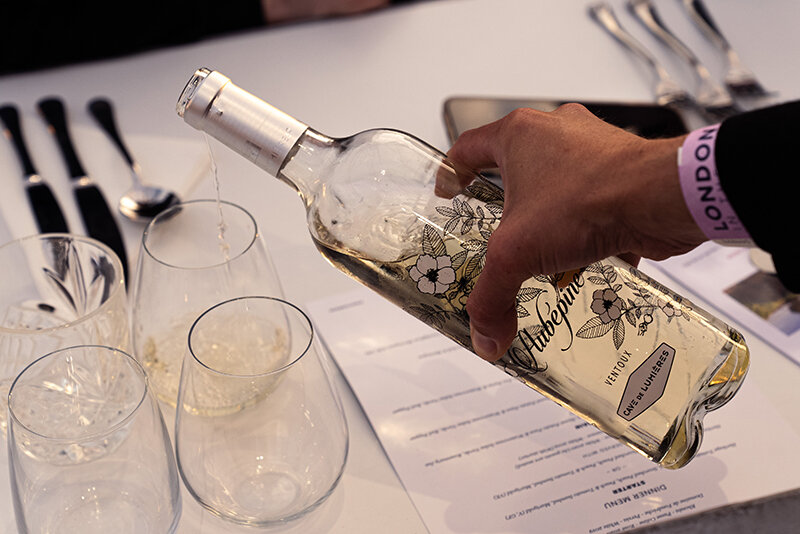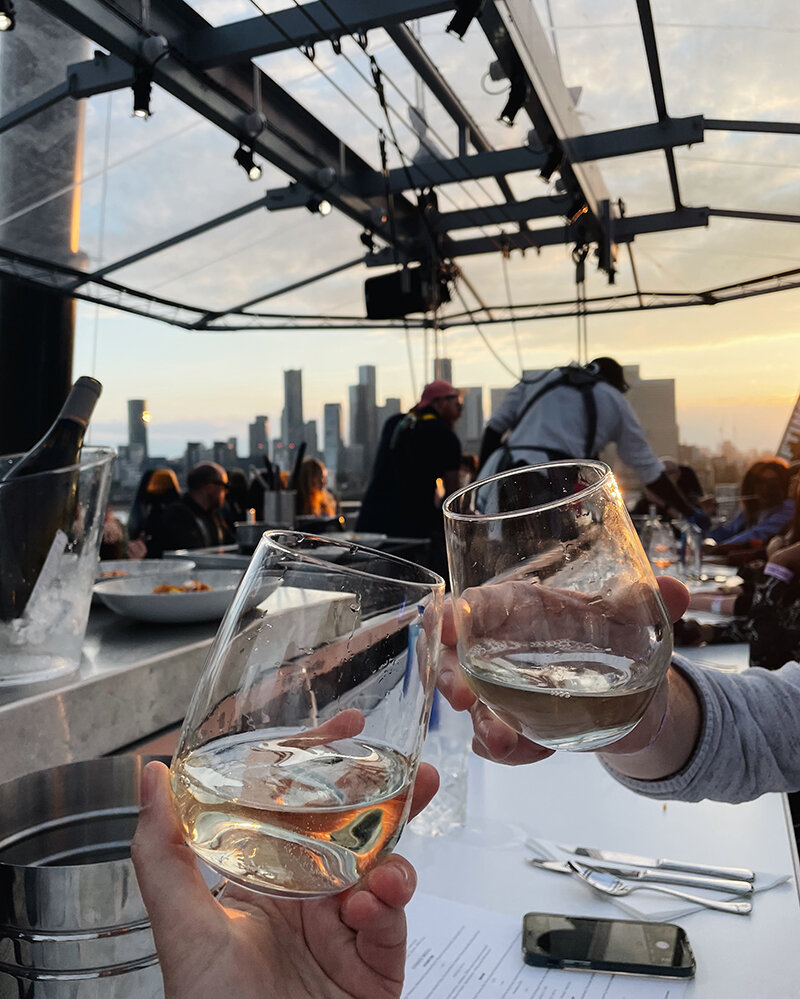Wine Regions, Part 3: Ventoux

IN PARTNERSHIP WITH VENTOUX
To talk about high altitudes of Ventoux let’s go up into the London sky first. Smart, right? It’s Friday night and we are taking a flight with London in the sky dining experience for a wine & food pairing extravaganza.
Ventoux is a large wine region in the far southeast of the southern Rhône, on the border with Provence. Mont Ventoux looks down over the wine-producing areas of the Rhône Valley to the west and Provence to the south and east. The mountain (often referred to as the Giant of Provence) stands alone from the Alps mountain range, of which it is technically a part, and towers over the landscape for miles around. On the western slopes and foothills of this iconic mountain, in an area roughly 30 miles (50km) from north to south and covering 51 communes, are the vineyards of the Ventoux appellation. The Luberon region lies on its southern border (I’ll be covering this AOC in the next ‘Wine Regions’ blog post later this month).
A bit of history of this wine region that I learnt on this flight. Vines have been grown in the Ventoux area since ancient times. Archaeological digs around the village of Mazan uncovered a potter's workshop dating from the 1st century BC, where the first known wine amphorae in France were produced. The vineyard flourished during then Avignon Papacy. Over the centuries Ventoux wines, alongside other leading French wines, were served to the kings of France at the Royal court.
In 1939, Ventoux's winegrowers formed a union, the "Syndicat des Vins de Ventoux" to promote the quality and characteristics of the region's wines. Thanks to their efforts, their wines were awarded Vin Délimité de Qualité Supérieure (VDQS) status in 1953, and were promoted to AOC in 1973
The style of these wines varies according to the combination of grape varieties used and the terroir from which they originate. The style is overall one of lighter, fruit-driven wines, compared with wines from neighboring regions. This reflects the increased altitude and slightly cooler mesoclimates that the Ventoux slopes provide.
The intense southern French sunshine that covers the south- and west-facing slopes of Ventoux helps the wines to achieve a good level of ripeness, while the cooler temperatures from altitude moderate this effect and grant the grapes extended hang time. Grapes grow so well here that the Muscat produced for table grapes has its own AOC Muscat du Ventoux appellation.
We tried seven Ventoux wines and they were perfect addition to a warm summer evening. Starting from Sarl Aureto AUTAN 2020 and Passe Colline 2020 rose; moving to Chateau Pesquie Quintessence 2019 and Cave de Lumieres 2020 whites to go with delicious heritage tomato salad starter. The main course was paired with Domaine de Findreche Persia 2019 red and chocolate dessert with the unique Chene Bleau Abelard 2012.
This balmy summer's evening, being elevated over the heights of London, tasting the varied and sumptuous wines of Ventoux with a beautifully paired menu, has certainly put the region on my radar both for wines that I shall seek out and a place I'd like to discover once we can travel freely again. Santé!
Read more via www.aoc.ventoux.com









